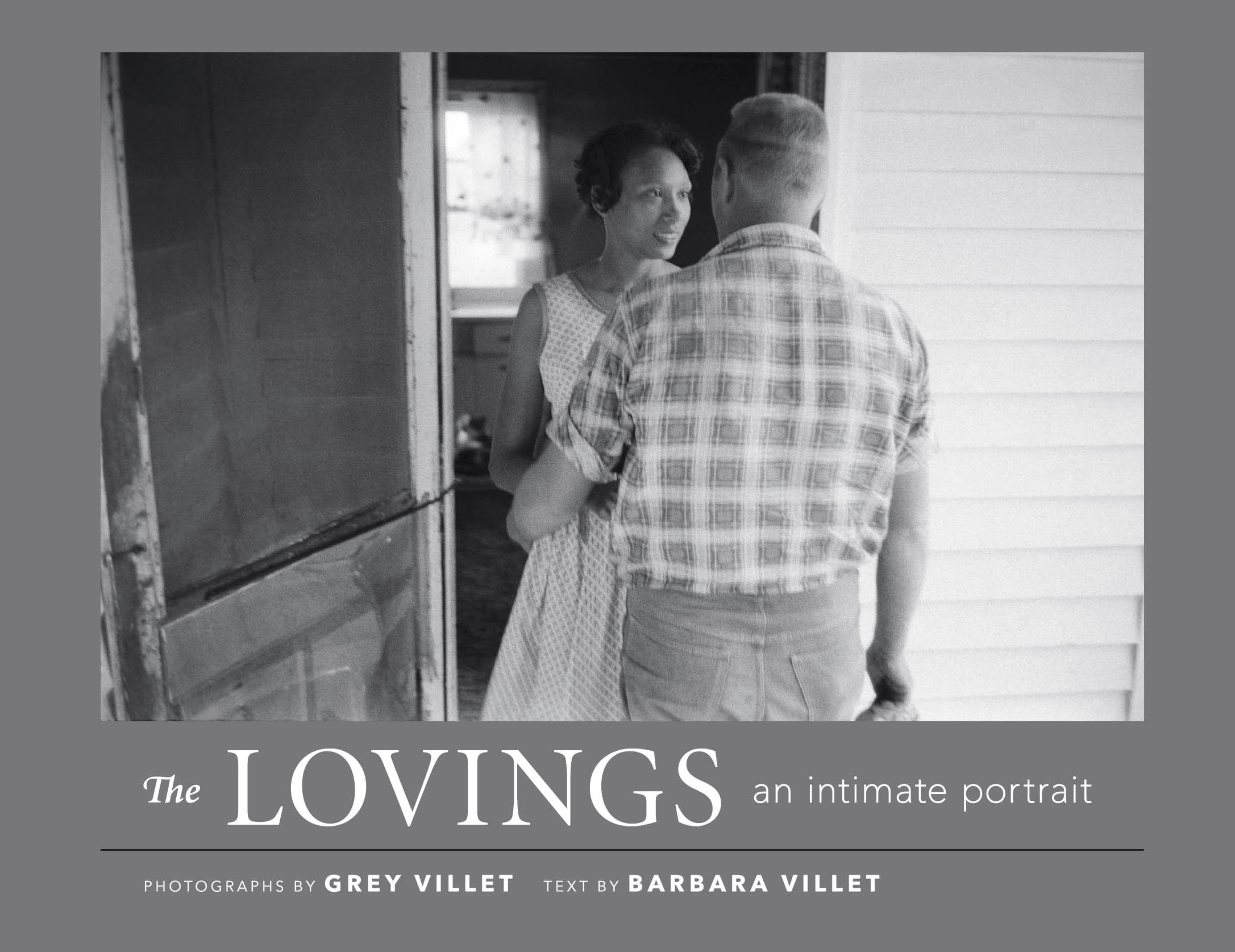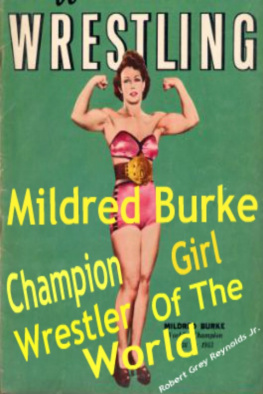

Richard and Mildred Loving

Published by
Princeton Architectural Press
A McEvoy Group company
37 East Seventh Street
New York, New York 10003
202 Warren Street
Hudson, New York 12534
Visit our website at www.papress.com
2017 Grey Villet Photography
Foreword Stephen Crowley, 2017
Text Barbara Villet, 2017
Photography Grey Villet, 1965
All rights reserved
No part of this book may be used or reproduced in any manner without written permission from the publisher, except in the context of reviews.
Every reasonable attempt has been made to identify owners of copyright. Errors or omissions will be corrected in subsequent editions.
Some photographs in this collection have been previously licensed for publication, all such licenses being nonexclusive.
Design: Ann Villet
Editor: Barbara Darko
Typesetting: Paul Wagner
Book producer: Valerie Tomaselli, MTM Publishing
Special thanks to: Janet Behning, Nicola Brower, Abby Bussel, Erin Cain, Tom Cho, Benjamin English, Jenny Florence, Jan Cigliano Hartman, Lia Hunt, Mia Johnson, Valerie Kamen, Simone Kaplan-Senchak, Diane Levinson, Jennifer Lippert, Kristy Maier, Sara McKay, Eliana Miller, Jaime Nelson Noven, Esme Savage, Rob Shaeffer, Sara Stemen, and Joseph Weston of Princeton Architectural Press Kevin C. Lippert, publisher
Library of Congress Cataloging-in-Publication Data
Names: Villet, Grey, photographer. | Villet, Barbara, author.
Title: The Lovings : an intimate portrait / photographs by Grey Villet ; text by Barbara Villet.
Description: First edition. | New York : Princeton Architectural Press, 2017.
Identifiers: LCCN 2016039735 | ISBN 9781616895563 (hardback) | ISBN 9781616896126 (epub, mobi)
Subjects: LCSH: FamiliesVirginiaPictorial works. | Loving, Richard PerryPortraits. | Loving, Mildred JeterPortraits. | Loving, Richard PerryBiography. | Loving, Mildred JeterBiography. | Interracial marriageVirginiaPictorial works. | Interracial marriageLaw and legislationVirginia | BISAC: HISTORY / Social History. | PHOTOGRAPHY / Individual Photographers / Monographs. | PHOTOGRAPHY / Photoessays & Documentaries.
Classification: LCC TR681.F28 L68 2017 | DDC 779/.9306846dc23
LC record available at https://lccn.loc.gov/2016039735
Foreword
Imagine, if you will, Grey Villet in his rural New York home at winters end in 1966, carefully affixing the mailing address Richard and Mildred Loving, Central Point, Virginia onto a bulky 11" x 13" parcel of moments. Some fifty photographs, hand-printed in the Life magazine photo lab, filled the packagea gesture of friendship to the quiet and modest couple, who were challenging Virginias ban on interracial marriage, from a quiet and modest man, who was one of the most influential practitioners of Lifes photographic essays.
In the spring of 1965, Mr. Villet had taken a Life assignment to photograph the Lovings, a married interracial couple then embroiled in legal tangles after their arrest for miscegenation in the state of Virginia, as his wife and storytelling partner, Barbara Villet, later wrote. Grey did not concern himself with those tangles; he chose, as he did in every essay we ever worked on together, to seek out the literal heart of the matter: a love story.
In 1967 the US Supreme Court upheld the right for couples of mixed race to marry. For the next seven years, the Lovings lived happily with their three children, bound by the love of each other and their extended family, until separated by the death of Richard, who was killed by a drunk driver in an automobile accident. Mildred, a quiet hero of the civil rights era, passed on May 2, 2008.
Over those intervening years, Greys work on the Lovings had been shrouded by obscurity, and little had been written about him or it. Always unassuming, he had made no bid for attention during his long career, even forswearing entries in various photo competitions, believing, as he told Barbara, that in time the work will tell and find a lasting place in the annals of photojournalism. Tall, he was a man of few words whose subtle, comforting presence and preference for using only available light allowed him quietly to capture complex tableaus without disturbing his subjects, while carefully considering shutter speed and aperture. The results were such visceral scenes that it is difficult to remember they are only two-dimensional.
In this digital world, its also easy to forget the kind of intensity of focus and experience it took to produce photographs like the ones Grey and his peers made, composing essays in the field without the benefit of the instant feedback available today. But Grey took the matter a step further in his search for veracity. I hate to set up stuff, he told fellow Life photographer John Loengard in his book What They Saw. Id much rather let people act as they are, and reflect that. If Ive got the patience, thatll give me a better picture than anything I can dream up.
I was nine years old, living in a small town in south Florida, when I read Grey Villets 1961 The Lash of Success in Life magazine. Life was one of the very few extras my family could afford. Its pages were filled with images of President John F. Kennedy, the space program, and the rising stars of television. Yet it was the subject and style of Lashabout a businessman sacrificing his humanity in pursuit of successthat had the greatest impact upon me. It has always stayed with me, and I hold it partly responsible for my decision to pursue photography as a career. Ive always believed that the proper way to honor artists work is to respect their ideas while avoiding imitation, but its difficult not to be influenced by Mr. Villets oeuvre. Ive done hundreds of picture stories since I started in photography in the late 1970s, and I have to admit that theres a bit of the Grey Villet DNA in every one of them.
Stephen Crowley, photographer, New York Times, Washington Bureau, 2017
INTRODUCTION: A QUEST FOR JUSTICE
A s the photographer Grey Villet listened to Mildred Loving explain how she and her husband, Richard, had become outlaws in the state of Virginia, neither could have predicted the lasting influence the story she was telling would have on Americas future. It was April 1965 and Villet had come to the isolated farmhouse the Lovings had secretly rented in Virginias King and Queen County, to do a story on their predicament for Life magazine. At the time, the Lovings, who were subject to as much as twenty-five years in prison if found living together in the state, were in the midst of challenging a Virginia law prohibiting their interracial marriage, one that reflected long-standing attitudes then common throughout the South supporting a separation of the races.
Villet was well acquainted with such attitudes. A South African by birth, he had seen apartheid instated there before emigrating to the United States to join Life, and his coverage of the violence attending the civil rights movement as it swept through Montgomery, Birmingham, Little Rock, and Memphis in the 1950s had made him well aware of the potential dangers of the Lovings situation. Bombings, lynchings, cross burnings, and murders had answered early phases of the fight for racial equality, and although the Civil Rights Act of 1964 had outlawed many discriminatory practices at the federal level, it had not altered entrenched popular support for either extant state laws like that outlawing interracial marriage in Virginia or the common racial biases and resentments upholding them. But as Villet began to document their situation, its implicit dangers seemed something the Lovings had often managed to forget. As a result, the classic photographs collected here for the first time tell of a love story that is still influential in a changing America.
Next page






